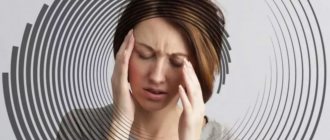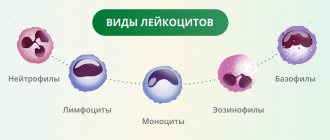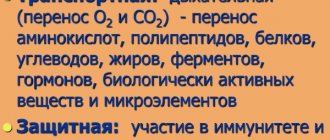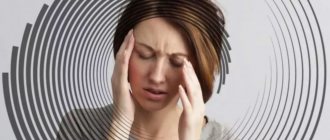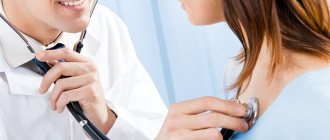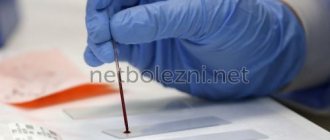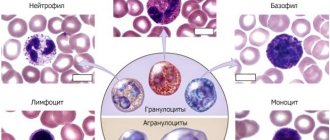Unfortunately, even the strongest and healthiest people who care about their health are faced with various diseases. Most often, suffering is caused by the heart and blood vessels, which cause not only considerable discomfort, but also fear for one’s life. Vibration in the heart area or trembling is accompanied by constant discomfort, expressed either only in the heart or in the entire body at once. To cope with such a pathology, you should urgently consult a doctor and undergo an examination.
Symptoms
Trembling or vibration in the chest area, and in particular in the heart, can be of a completely different nature. This symptom develops as a result of frequent excitation of the heart muscle and subsequent contraction, which leads to poor circulation and the development of heart pathologies. It can appear either in the heart muscle, gradually spreading to the chest, and can even be localized throughout the body. Symptoms may be different: for example, trembling may be scattered in the sternum area, and then move to the heart. All patients describe these symptoms differently.
Vibrations in the heart area may be accompanied by shortness of breath, dizziness, fainting, or irregular or increased heartbeat. Such sensations are usually regular and occur on the basis of a certain pattern. For example, they manifest themselves in specific situations of human life, during physical activity, in stressful situations, when traveling by car, etc. Sometimes tremors can even appear depending on the time of day, becoming more frequent when waking up or before getting ready for bed.
There are cases when vibration is not accompanied by pain in the sternum. But still, if such symptoms occur, the patient should consult a doctor, because such symptoms may indicate the development of a dangerous disease, especially if attacks of such tremors are regular.
Classification of noise and main causes
- Functional - appear with anemia, high fever, pregnancy, thyroid diseases.
- Accidental (harmless).
- Organic – consequences of anatomical changes in valves and septa.
By the nature of localization:
- intracardiac;
- extracardiac;
- vascular.
Organic are divided into:
- pleurocardial – caused by adhesions between the pericardium and pleura;
- pericardial friction rub – observed with pericardial effusion and dry pericarditis.
Functional:
- cardiopulmonary (“systolic breathing”) – occurs when, during systole, areas of lung tissue that were previously compressed by the heart muscle straighten;
- chordal;
- muscular;
- valve
In relation to the phase of the cardiac cycle:
- systolic (often found in myocardial infarction, mitral valve insufficiency);
- diastolic (for rheumatism).
By intensity (rated on a six-point scale):
- 1/6: listen with maximum concentration of attention;
- 2/6: the noise is not loud, but sonorous enough to be heard immediately;
- 3/6: loud and audible;
- 4/6: loud and accompanied by tremors on palpation;
- 5/6: heard when applying the edge of the phonendoscope;
- 6/6: heard when the phonendoscope membrane is just approaching the site of auscultation.
Causes
There are many reasons for vibration in the chest. All of them can be caused by various pathologies, including endocrinological, cardiological, psychological, neurological. Each of them is worth considering in a little more detail.
If we talk about the neurological nature, then patients with neuralgia, that is, pinched nerve in the chest, and thyrotoxicosis, which is associated with a high level of thyroid hormones in the body, encounter this symptom.
People suffering from panic attacks also experience vibrations in the chest area. Panic is a psychosomatic condition characterized by attacks of anxiety and fear. They usually develop against the background of depressive disorders, phobias and stress.
From the side of the cardiovascular system, tremors in the heart muscle can be caused by a number of cardiac pathologies:
- hypertension;
- ischemia;
- arrhythmia;
- mitral valve diseases.
In case of such a problem, the patient should immediately consult a doctor, because all these pathologies pose a great threat to life.
Periodically, trembling in the chest can be observed in people who suffer from alcohol addiction, or who have recently gotten rid of it. Regular consumption of alcoholic beverages develops pathologies in the atria. Important: they can also develop after abuse of nicotine, caffeine and narcotic drugs.
First aid
If tremors develop sharply in the chest, and there is also frequent contraction of the heart muscle, you need to immediately stop physical activity, leave the room into the open air, and breathe well. When treating another person with signs of vibration in the chest, it is recommended to lay the patient on any horizontal surface. Loosen your tie or unbutton the top buttons and let fresh air into the room.
If a person’s face begins to suddenly turn pale, it is necessary to raise the lower limbs slightly higher than the body; the manifestation of such signs indicates imminent fainting or preconditions for a stroke. If the cause of the pathology is problems with the main organ, it is necessary to give the patient a tincture of Valerian or Motherwort to drink.
Diagnostics and treatment methods
Vibration in the heart area requires a thorough examination to determine the nature of the attacks. Initially, the patient can seek help from a therapist, who, after an examination, will be able to determine which specialist will help the patient.
For examination, the patient may be prescribed the following procedures:
- cardiac echocardiography;
- ECG and daily ECG monitoring;
- daily blood pressure measurement;
- Dopplerography of cerebral vessels;
- general tests, as well as hormone levels.
Based on the examination results, the doctor will prescribe an individual course of treatment for the patient. If the whole problem lies in psychosomatics, then antidepressants and sedatives are prescribed. When the problem lies in cardiology, the doctor may recommend drugs that regulate heart rate and rhythm. Depending on the indications, some patients are prescribed medications aimed at thinning the blood, which helps prevent stroke.
Arrhythmia attack: when the heart asks for help
The human heart is a unique organ that itself creates impulses that contribute to its beating. In the absence of problems with the myocardium, these shocks are not felt. If a person hears them, it means that the heart’s function is impaired. This condition of the heart muscle is called arrhythmia.
Types and symptoms of pathology
Arrhythmia is a pathological process due to which there are disturbances in the frequency, rhythm, and contraction of the heart. In a person with normal functioning of the sinus node, the speed of tremors fluctuates between 60-90 beats/minute. During an attack of arrhythmia, their number may decrease or increase, depending on the type of pathology.
Arrhythmia occurs in the presence of predisposing factors:
- neurocirculatory dystonia is a mental disorder characterized by the spontaneous occurrence of panic attacks;
- thyroid diseases (thyrotoxicosis, hyperthyroidism and others);
- cardiomyopathy, myocarditis;
- cardiac ischemia;
- previous heart attack;
- hypertension (high blood pressure);
- heart defects;
- pregnancy.
More than 10 types of arrhythmias occur in medicine. They differ in origin, symptoms, and course of the disease.
8
24/7
Sinus bradycardia
An attack of arrhythmia in which the pulse rate is below 55 beats per minute is called bradycardia. It can be recognized by the following symptoms:
- blood pressure surges;
- severe weakness;
- dizziness;
- feeling of discomfort in the heart area.
Bradycardia can even occur in people who exercise while they are resting or sleeping. Typically, the pathology is accompanied by low blood pressure and decreased thyroid function.
Paroxysmal tachycardia
A condition in which the heart rate reaches 240 beats per minute is called tachycardia. There are 2 forms of it: pathological (with existing heart disease) and physiological.
It is dangerous because it reduces the level of blood filling of the ventricles, which negatively affects the general condition of the internal organs.
You can recognize it by the following signs:
- cardiopalmus;
- blurred or darkened vision;
- chest pain;
- dizziness, fainting;
- profuse sweating.
Sinus arrhythmia
With such an arrhythmia, the heart rate decreases during inspiration and increases during exhalation. This condition often occurs in teenagers and pregnant women. An attack of this type of arrhythmia does not have a negative impact on the person’s condition and does not require treatment.
Atrial fibrillation
The pathology of the heart rhythm is caused by incomplete contraction of the atria, and the ventricles, on the contrary, often contract, reaching 240 beats/minute; in dangerous conditions, the heart rate reaches 600 beats. A prolonged (more than 2 days) attack of atrial fibrillation provokes the formation of blood clots, ischemic stroke, and death. There are 2 types of it: chronic (lasts more than a week) and transient (manifested by relapses).
Atrial fibrillation is accompanied by the following symptoms:
- trembling in the chest;
- weak pulse compared to heart rate;
- anxiety, fear;
- lack of air;
- dizziness, sometimes loss of consciousness.
This type of arrhythmia affects men much more often than women.
Extrasystole
Heart disease is considered the most common form among arrhythmias. It is expressed by untimely contractions of the atria.
Among the patient complaints, the following symptoms were noted:
- strong heartbeats or sensations of heart stopping;
- lack of oxygen;
- excessive sweating;
- fear of dying;
- pallor of the skin.
Medications are used to help with an attack of arrhythmia.
It is noted that extrasystole is more associated with vegetative or psycho-emotional disorders.
8
24/7
Ventricular or atrial flutter and heart block are the worst types of arrhythmia. Signs of pathologies are:
- loss of consciousness (fainting);
- hoarse, confused breathing;
- no pulsation;
- cardiac arrest;
- signs of clinical death.
In this case, it is necessary to try to stop the arrhythmia attack on your own by resorting to emergency measures, otherwise the patient may not wait for the cardiac team to arrive.
Causes
The causes of arrhythmia attacks lie in the conduction system of the heart muscle. If there is a failure in it, a person develops one of the types of pathology. The direct provocateurs of arrhythmia attacks are diseases of the heart itself (ischemic heart disease, heart attack, defects, cardiac dystrophy, cor pulmonale, pathologies of the conduction system). However, there are other reasons, which include:
- kidney and stomach diseases;
- tumors;
- hormonal imbalance;
- stressful situations, psychological disorders;
- diseases of the central and autonomic nervous system;
- head injuries, disturbances in the blood supply to the brain;
- drug intolerance or overdose;
- violations of water-salt metabolism;
- changes in the level of oxygen and carbon dioxide in the blood;
- atherosclerosis (narrowing, blockage of blood vessels);
- anesthesia of cardiac tissue;
- electric shock;
- heart surgery.
Based on all of the above, it is clear that there are a huge number of reasons for the development of arrhythmia.
Diagnosis of arrhythmia
At an appointment with a cardiologist, you should tell all the existing signs of the disease. The clinical picture will help the doctor make an approximate diagnosis. However, the patient will need to undergo additional examination to determine the exact cause of the disorders.
One of the first diagnostic methods is listening to heart sounds (auscultation), as well as electrocardiography. In some cases, Holter monitoring is performed. To do this, use a special device that is not removed throughout the day. The purpose of this type of diagnosis is to monitor the heart rate within 24 hours. With its help, any deviations in heart rhythm are recorded.
If, however, deviations are not recorded, an arrhythmia attack is artificially induced.
- Electrophysiological research method. To do this, a catheter is placed in a vein that leads to the heart, and electrical stimulation of the heart muscle is performed. The method allows you to accurately determine the presence and stage of arrhythmia.
- Stimulation through the esophagus.
- Tilt test.
Treatment at different stages
If an arrhythmia attack occurs for the first time, you need to call an ambulance and carry out first aid measures. You should follow the instructions for emergency resuscitation step by step:
- put the patient into bed or sit the patient in a chair;
- calm down and open the window to let fresh air in;
- in severe cases, it is necessary to provoke a gag reflex;
- perform a breathing exercise in which, closing your eyes and taking a deep breath, hold the exhalation for a couple of seconds;
- give the patient sedatives (Corvalol, Valocordin, motherwort tincture).
Qualified specialists know how to relieve an attack of arrhythmia with the help of medications. In medical practice, medications are used to relieve attacks:
- sodium channel blockers (Quinidine, Novocainomide, Propafenone, Lidocaine);
- beta-blockers (Egilok, Bisoprolol, Atenolol, Metoprolol);
- potassium channel blockers (Amidarone, Sotohexal, Cordarone, Nimotol);
- calcium channel blockers (Amlodipine, Dilteazem, Nimotol, Verapamil).
Cardiac glycosides, magnesium and potassium preparations (Asparkam, Panangin) are also used.
In the absence of effect from drug treatment, deterioration of the patient's condition and serious heart disease, surgical intervention is performed.
Forecast
If there is an arrhythmia that does not pose a threat to human life, there is no need to worry about treatment. However, you can live a normal life even with serious forms of arrhythmia.
The prognosis for the disease mainly depends on the patient himself. To normalize the condition, you need to follow simple rules:
- strictly follow all recommendations of the attending physician;
- tell the doctor about the side effects of the prescribed medications, do not replace them yourself and report any worsening of the condition;
- monitor blood tests.
Prevention
To prevent arrhythmia attacks, doctors will tell the patient what to do:
- promptly treat existing diseases of any body system, including infectious diseases;
- adhere to proper nutrition (exclude fatty, fried, sweet foods, or at least reduce their consumption to a minimum);
- engage in simple physical exercise (do exercises in the morning, walk in the park or other places with low levels of air pollution);
- monitor your daily routine (healthy sleep for at least 8 hours, naps for 20-60 minutes during the day);
- get rid of bad habits (alcohol, smoking, drugs, drinking energy drinks and large amounts of coffee);
- maintain normal weight;
- control blood sugar levels in diabetes and blood pressure in hypertension;
- experience more positive emotions, avoid stressful situations.
An attack of cardiac arrhythmia is a difficult condition. However, it is treatable. The main thing is not to neglect timely diagnosis and consult a doctor in case of any violations. By undergoing an annual examination, you can reduce the likelihood of developing severe pathologies to a minimum and significantly improve your quality of life. Visiting a doctor today is the key to good health and longevity in the future.
8
24/7
How to provide first aid?
Not everyone’s body tremors go away without significant symptoms. If you experience an attack of trembling and palpitations, you should get rid of the factors that provoked the attack. These could be, for example, being in a stuffy room or playing sports.
When a person becomes ill, you need to lay him on a horizontal surface, and it does not matter whether it is a bed or something more solid, for example, a bench. To reduce the load on the heart and blood vessels, you need to clear the airways, i.e. remove the scarf, unbutton your jacket, shirt, etc. In other words, a person must breathe freely and without any obstacles.
If your face turns pale, raise your legs higher than your body, as the person may faint or suffer an ischemic stroke. When it is not possible to immediately call an ambulance or see a doctor, use folk remedies - prepare a tincture of motherwort or valerian. It is worth noting that this is only a temporary measure and cannot be used as a treatment, as it will not be effective alone. In addition, the doctor may prescribe it as a comprehensive measure to combat pathology.
Treatment
Having received the results of additional examination methods, the doctor carries out differential diagnosis and prescribes treatment. First of all, the condition that led to the appearance of sound defects is eliminated, since the causes of heart murmurs in adults are very diverse. So, for anemia, iron supplements are prescribed. As hemoglobin levels are restored, the noise level decreases.
In case of endocrine system disorders, consultation with an endocrinologist is necessary. By correcting the condition and prescribing drug therapy, surgery (as in the case of identifying pheochromacytoma), the noise caused by the diagnosed pathology is eliminated.
During pregnancy, unless, of course, it is accompanied by complications, the noise goes away immediately after birth.
There is also the option of determining systolic murmur for minor abnormalities of the heart muscle. Since they do not manifest themselves clinically and do not interfere with the patient’s life, treatment is not prescribed in such cases. This category of patients requires consultation with a cardiologist and ultrasound of the heart at least once a year. When dealing with organic organ damage, delay in starting therapy is unacceptable.
Drugs prescribed for the treatment of patients with abnormalities in auscultation:
- Anticoagulants. The mechanism of action is aimed at reducing blood viscosity and preventing the formation of blood clots (Dicoumarin, Warfarin, Heparin).
- Diuretic medications remove fluid from the body, reduce swelling and stress on the heart (Furosemide, Veroshpiron, Hydrochlorothiazide).
- Beta blockers reduce the number of heart contractions (Anaprilin, Bisoprolol).
- Statins reduce cholesterol levels in the blood, which improves blood circulation (Atorvastatin, Lovastatin).
Surgical options:
- Balloon valvuloplasty. The essence of the operation is to restore the normal diameter of the valve. A catheter with a small balloon is inserted into the heart through an access in the femoral artery.
Its position is regulated by an X-ray machine. After reaching the problem area, the doctor inflates the balloon and the valve expands. After this, the system is deflated and the catheter is removed. The success of the operation is monitored using fluoroscopic equipment. - Annuloplasty. The intervention is classified as valve-sparing. Its goal is to create additional support for the fibrous valve ring using special implanted elements.
- Commissurotomy. A surgical procedure that involves separating valve adhesions. Indication for this procedure is valve stenosis.
- Replacing valves. This operation is advisable when the surgeon cannot restore the damaged valve using more gentle methods. During the intervention, the worn valve is replaced with a mechanical or biological implant.
Possible complications
Regardless of the severity of the symptoms and their nature of formation, trembling in the chest is dangerous due to the manifestation of complications. This form can develop into ventricular and atrial fibrillation, and also increases the likelihood of developing thromboembolism and the formation of blood clots, as a result of which the patient may experience pulmonary embolism and stroke. These consequences, if not properly treated, can lead to disability and even death.
FacebookvKontakteTwitterWhatsApp
conclusions
Heart murmurs always cause the doctor to be wary and apprehensive. With the help of detection, a serious disease is diagnosed in a timely manner. Then treatment is prescribed. Sometimes these same noises are caused by functional changes, as a result of which you just need to adhere to a healthy lifestyle and follow these rules:
- monitor cholesterol levels;
- control the amount of iron in the blood;
- adhere to the principles of rational nutrition;
- perform regular physical exercise (if there are no contraindications).
Symptoms of cardiac arrhythmia:
- Weakness, accompanied by dizziness, absent-mindedness, drowsiness and headaches. It appears in cases where special efforts are required to perform some action.
- Rapid heartbeat, which feels like a “thrill,” the heart is pounding or “jumping out of the chest.” May be accompanied by strong pulsation in the neck, temples, fingertips, tinnitus and difficulty breathing.
- Pain in the chest, behind the sternum. It can be aching, stabbing, burning. Accompanied by difficulty breathing, cold sweat, and nausea.
- Dyspnea. Breathing becomes frequent and noisy. If shortness of breath occurs at rest or with slight physical exertion, its nature is pathological. It is cardiovascular diseases that lead to insufficient blood circulation. The organs do not receive the required amount of oxygen and accumulate carbon dioxide. Internal organs do not receive the required amount of oxygen. This causes shortness of breath.

